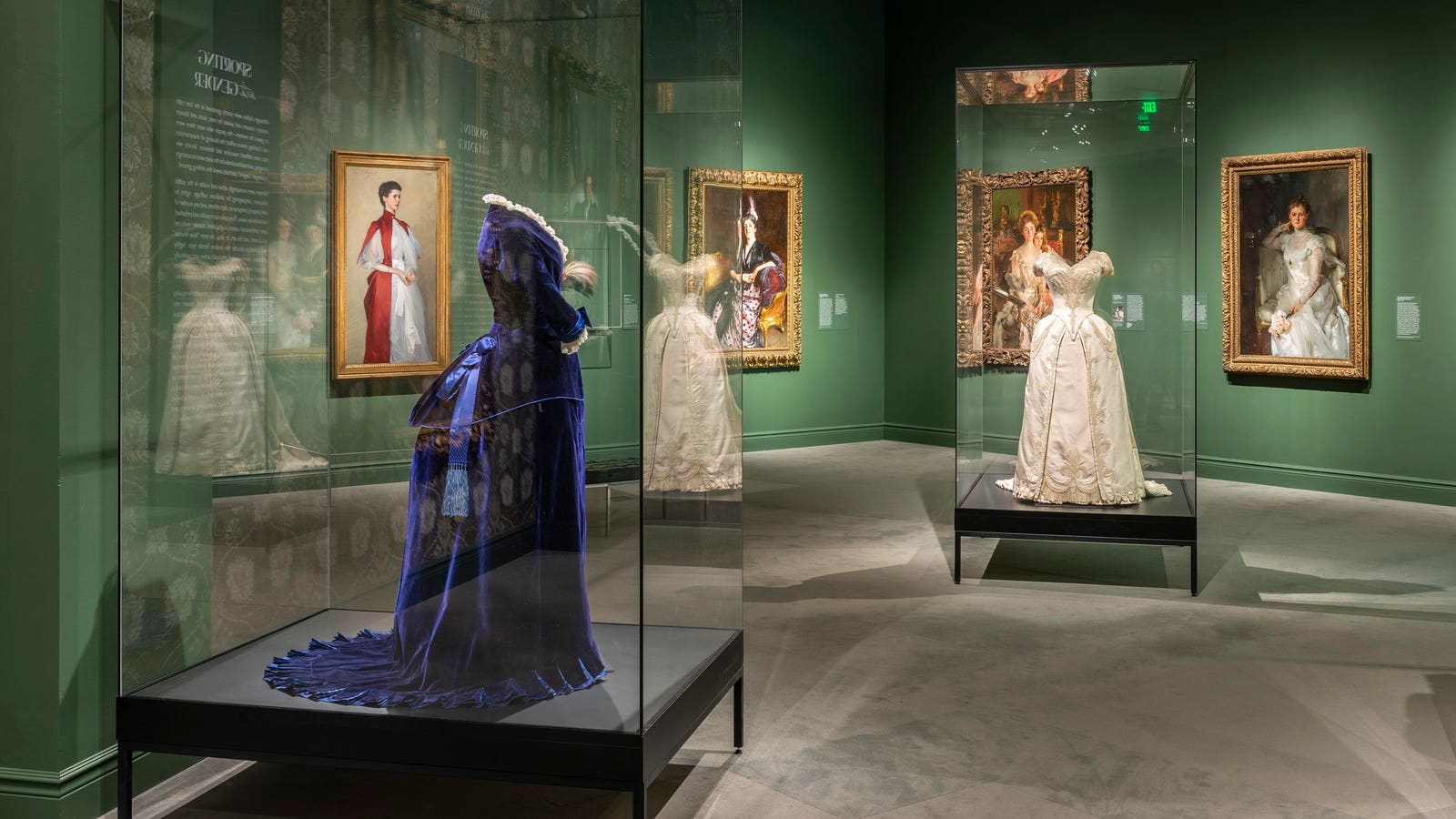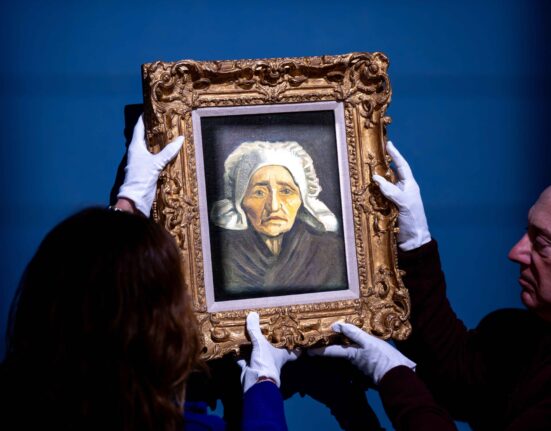Wall power.
What the art world calls a painting jumping off the wall, demanding to be recognized.
The visual equivalent of Whitney Houston’s voice.
No picture ever painted has more of it than John Singer Sargent’s Portrait of Madame X (1884).
Not Mona Lisa. Not Starry Night. Not Birth of Venus.
Madame X exudes–with a total lack of subtly–the power and confidence manifested by a beautiful woman who knows she is beautiful, and what’s more, knows what effect that beauty has on people, men and women.
“Sargent depicted Virginie Avegno Gautreau, an American expatriate from Louisiana, as the quintessential Parisienne: self-confident, perfectly groomed, and immensely glamorous,” Erica E. Hirshler, Croll Senior Curator of American Paintings at the Museum of Fine Arts, Boston, told Forbes.com. “Madame Gautreau was well-known in Paris for her artful appearance, which she enhanced with lavender powder and bespoke gowns. The artist painted her with care, emphasizing her contours and profile, almost as if she were a classical sculpture.”
All well and good.
Sargent was a genius with the brush, Gautreau a knockout, but that doesn’t fully explain this painting’s presence. Why it had Parisian tongues wagging. The uproar it caused. The fame the image has gone on to acquire.
“Sargent’s original composition (later repainted), in which her right strap had slipped from her shoulder, further emphasized the daring cut of her dress,” Hirshler explains.
Scandalous.
This wasn’t an idealized Venus showing that much shoulder, but an actual person long before even pinups, laughably modest by today’s standards, were a thing. The bikini wouldn’t be invented for another 62.
“She described it as a ‘masterpiece,’ but the painting was much criticized at the 1884 Salon, and Sargent’s ambitions as a portrait painter in Paris were severely compromised by the event,” Hirshler adds. “The hostile reception may have come in part because Madame Gautreau and Sargent—both Americans—had presumed to take on the French at their own game: fashion and art.”
The enormous, nearly life-sized painting was ridiculed by critics and the public. It trashed Sargent and Gautreau’s (1859–1915) reputation in Paris. Sargent reworked the painting considerably, including lifting the dress strap back over Gautreau’s shoulder.
He held the painting for 30 years before selling it to the Metropolitan Museum of Art in 1916, one year after Gautreau’s death, requesting the museum rename it so as not to dredge up the scandal it caused both artist and subject. By that time, he considered it the best work he’d ever made.
Gautreau became Madame X, the painting one of the most recognizable in art history.
Gautreau was a socialite in her day, but Madame X doesn’t get around much anymore. The painting hasn’t left 1000 5th Avenue, New York, New York since 2006. However, now through January 15, 2024, the painting can be seen at the Museum of Fine Arts, Boston, where Hirshler has organized the exhibition, “Fashioned by Sargent,” the first museum exhibition to focus on the relationship between John Singer Sargent’s creative practice and fashion.
John Singer Sargent
Born in Italy, trained in Paris, and a resident of London, Sargent (1856–1925) considered himself an America. Both of his parents were. A cosmopolitan childhood saw him immersed in European art and culture; he traveled widely and spoke French, Italian, and German in addition to English.
As an artist, he was a prodigy.
Portraiture being one of the best ways for an artist to earn a living at the time, Sargent threw himself into it, becoming the leading portrait painter of his generation. He produced some 900 oil paintings, 2,000 watercolors, and countless sketches.
“The majority of Sargent’s portraits were commissioned, and they enabled Sargent to live comfortably, but he also sought out people he was interested in painting—two important works that were not commissions are Madame X and Dr. Pozzi at Home,” Hirshler said. “Sargent pursued these sitters for his own artistic purposes and these portraits are often more dramatic than many of his other works.”
Dr. Pozzi at Home, from the collection of the Hammer Museum in Los Angeles, is also on view in “Fashioned by Sargent.”
By the early-1900s, he left his portrait work and concentrated on large-scale mural commissions for the Boston Public Library; Harvard University’s Widener Library; and Museum of Fine Arts, Boston. Today, despite only spending time there to work, Sargent is as well associated with Boston as anywhere.
“His father’s ancestors were from Gloucester, MA, so there were family ties to New England. From his earliest days as a professional, he met, interacted, and painted a number of Bostonians, among them Henry James, the Edward Boits, Lady Playfair, and others,” Hirshler explained. “He came to Boston on his first working trip to the United States in 1887, painting numerous portraits here and holding his first-ever solo exhibition in Boston in 1888. In 1890, he was commissioned to paint murals for the Boston Public Library and he returned frequently thereafter.”
The MFA, Boston bought its first oil painting by Sargent in 1905, and a suite of watercolors followed in 1912. Then came commissions to decorate the Museum’s Rotunda (1916) and Colonnade (1922).
“The MFA now has a gallery dedicated to the artist’s paintings, including his masterful portrait The Daughters of Edward Darley Boit, given to the Museum in 1919 by the Boit sisters in honor of their father—a friend of Sargent’s,” Hirshler said. “In 2015, the MFA announced the establishment of the John Singer Sargent Archive, formed with a gift of letters, photographs and sketches that document the artist’s life and world, given by Richard Ormond (Sargent’s grand-nephew) and his wife Leonée, and Warren Adelson together with his wife, MFA Overseer Jan Adelson.”
The MFA’s Sargent collection now numbers almost 600 works in all media and is the most comprehensive assemblage of his art in a public institution.
“Fashioned by Sargent”
“Fashioned by Sargent” includes about 50 paintings and over a dozen period garments and accessories. Several of these garments are reunited for the first time with Sargent’s portraits of the sitters who once wore them.
Ellen Terry as Lady Macbeth (1889) from Tate Britain in London is displayed for the first time with the brilliant green beetle-wing encrusted gown the actress wore on stage, as is the MFA’s Mrs. Charles Inches (Louise Pomeroy) (1887) with her red velvet evening gown, and La Carmencita from Paris’ Musée d’Orsay and composed about 1890, shown for the first time alongside the dancer’s sparkling yellow satin costume.
“Sargent relished painting fabric, particularly the way light interacts with its folds to create the illusion of three dimensions and the way it reflects differently on different fabrics—velvet, satin, taffeta, etc.,” Hirshler said. “His bravura use of wide strokes of fluid paint are perfectly suited to the lush fabrics of the day.”
Sargent, as an artist, wasn’t interested in merely recording accurate renderings of his sitters.
“He would not necessarily paint his subjects as they chose to present themselves, but rather took an interventionist approach. He would recommend or veto clothing, select accessories, and pin or drape fabric. He controlled the compositions–some sitters were nervous about posing for him, as he saw them deeply,” Hirshler explained. “Sargent was always thinking about the final painting, about making a work of art that would last beyond the moment and stand up over time. Art making always came first.”
Interestingly, Sargent never transitioned his professional interest in fashion to his personal style.
“He looked like a banker,” Hirshler said.
In conjunction with “Fashioned by Sargent” at the MFA, “Inventing Isabella” at the Isabella Stewart Gardner Museum next door–where Sargent was the first artist-in-residence—analyzes images of that museum’s namesake, including Sargent’s controversial portrait of her. “Inventing Isabella” can likewise be seen through January 15, 2024.
Art lovers in Boston from out of town will enjoy staying at the Omni Boston Hotel at the Seaport where the art collection pays homage to the progressive technology and inventive mindset of the local art community by including a variety of diverse art mediums such as paintings, sculptures, digital art, and installations available for viewing 24/7. Book a room in the Artist Tower, with accommodations inspired by the clean lines and airiness of an artist’s studio.
The hotel also has a partnership with the MFA creating an exclusive package where guests will receive one ticket to the museum, per adult registered in room.
When it’s through in Boston, “Fashioned by Sargent,” and Madame X, can be seen at Tate Britain from February 21 to July 7, 2024.







